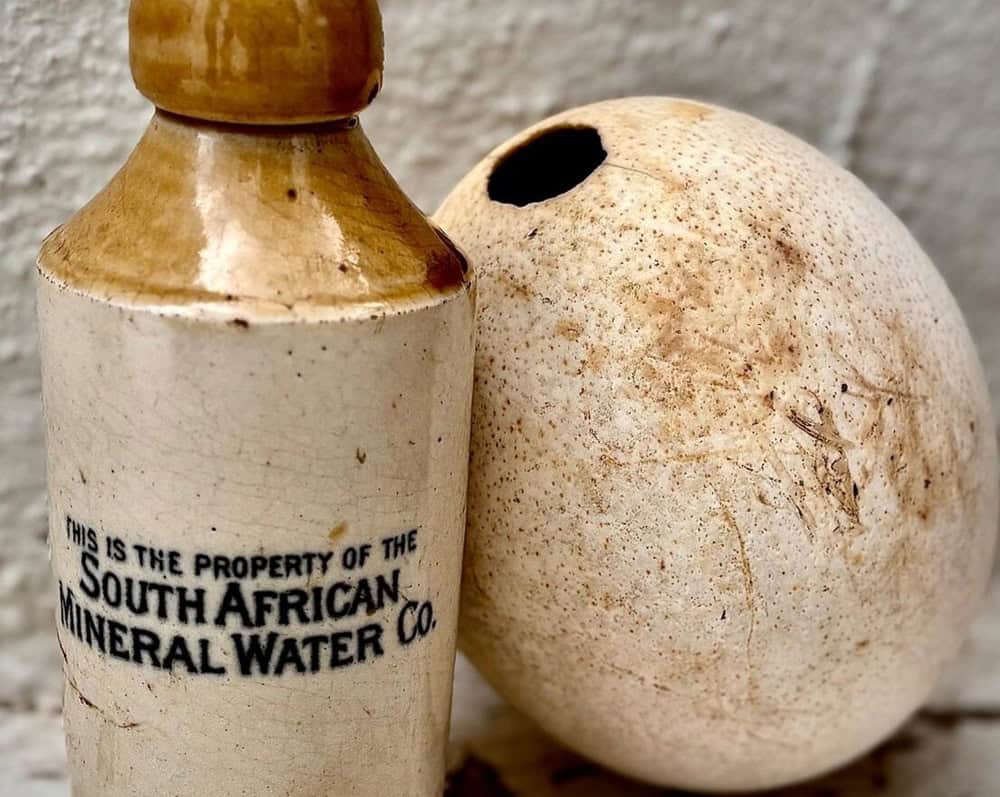Bottled water is more than refreshment; it’s an ancient tradition of survival, culture and respect for the land that sustains us.

The story of bottled water in this land is cultural, ancient and deeply entwined with who we are.
It is why the SA National Bottled Water Association (Sanbwa) exists – to protect that heritage, to ensure that what flows from our springs into a bottle carries with it not only purity and safety, but also respect for the legacy of water in this country.
Long before glass or plastic, humans found ingenious ways to store water.
Tens of thousands of years ago, hunter-gatherer groups, ancestors of the San and KoiSan, used ostrich eggshells as portable canteens.
Emptied, cleaned, sometimes sealed with beeswax, holes bored for drinking; these shells served travellers and warriors in arid landscapes.
ALSO READ: ‘Voetsek and fix your leaks’: Residents fuming as Tshwane threatens further water restrictions
At Diepkloof Rock Shelter, archaeologists have uncovered exquisitely decorated ostrich eggshell fragments, dating back about 60 000 years, clearly used as water containers, evidence of survival filled with artistry and identity.
Soon clay joined the story. Early pottery vessels, some of the oldest in southern Africa, were used to store water, food and seeds. Fired clay set the stage for durability, community life around hearths, granaries, wells and long treks across drought-prone terrain.
These materials – ostrich eggshell, tortoise shell, clay – tell a story of sustainability, as well as a respect for materials and ingenious design born of necessity.
Across Europe, the story of bottled water followed its own path of culture and commerce.
From Roman aqueducts feeding communal baths, to medieval spa towns built around natural springs, Europeans long associated water with healing and vitality.
ALSO READ: MP tells Morero that ‘entire Johannesburg is rotten’
Places like Spa in Belgium, Vichy in France, and Bath in England, became destinations where “taking the waters” was both ritual and remedy.
By the 16th and 17th centuries, mineral waters were being bottled at the source and transported to city dwellers eager for purity and health.
Locally, some of the same impulses took root: people seeking clean, reputedly healthy water from springs, rather than uncertain alternatives and, as colonial settlement expanded, spa towns became fashionable.
Sanbwa was founded in 1997 by water bottlers concerned about safety, provenance and consumer trust.
Regulation passed in 2006, created the legal regime governing packaged water, defining what natural water, spring water and mineral water mean; how it must be processed; and how it is to be packaged.
ALSO READ: A VIEW OF THE WEEK: SA’s collapse could come by tanker
By 2005, there were about 100 bottlers, from small local operations up to large automated plants. Brands such as Valpré emerged from pristine valleys; others drew on heritage springs.
Bottlers now had to balance modern expectations of hygiene, environmental responsibility, taste, branding, consumer preferences (still water, sparkling) and the social licence to operate.
Why does this deep history matter? When spring water is bottled in the highlands of KwaZulu-Natal, or when a karst aquifer beneath the Western Cape gives up crystal water, there’s lineage in the land.
The taste, purity and the mouth feel are all shaped by geology, rainfall and ancestral stewardship.
The earliest San people knew that water was precious; they carried it in lightweight eggshells or stored it underground; they didn’t waste; they didn’t pollute.
ALSO READ: Minister calls for municipalities to buy their own water tankers
Today’s bottled water industry must mirror that ethic: strong regulation, transparent sourcing, sustainable packaging, ethical use of groundwater, minimised waste.
Beyond regulation, the real test lies in practice: in how we draw from springs, how we treat plastic, how we ensure that all consumers, not only those who can afford premium brands, have access to safe drinking water. In how we protect water sources against overuse, pollution and degradation.
What will our water sources look like in 2050? Will we have protected every drop of this shared heritage?
For Sanbwa members, this question is not theoretical. They treat their sources with respect and care, guided by sustainability reports, source-protection protocols and a deep awareness of unique recharge rates.
The industry’s responsibility is to bottle water safely, but also to ensure the ecosystems that feed our aquifers and springs remain healthy for generations to come.
NOW READ: Johannesburg Water injects R800m into struggling Commando system






